Middle East
Lebanese president says disarming Hezbollah ‘delicate’ as Israel kills two | Israel attacks Lebanon News
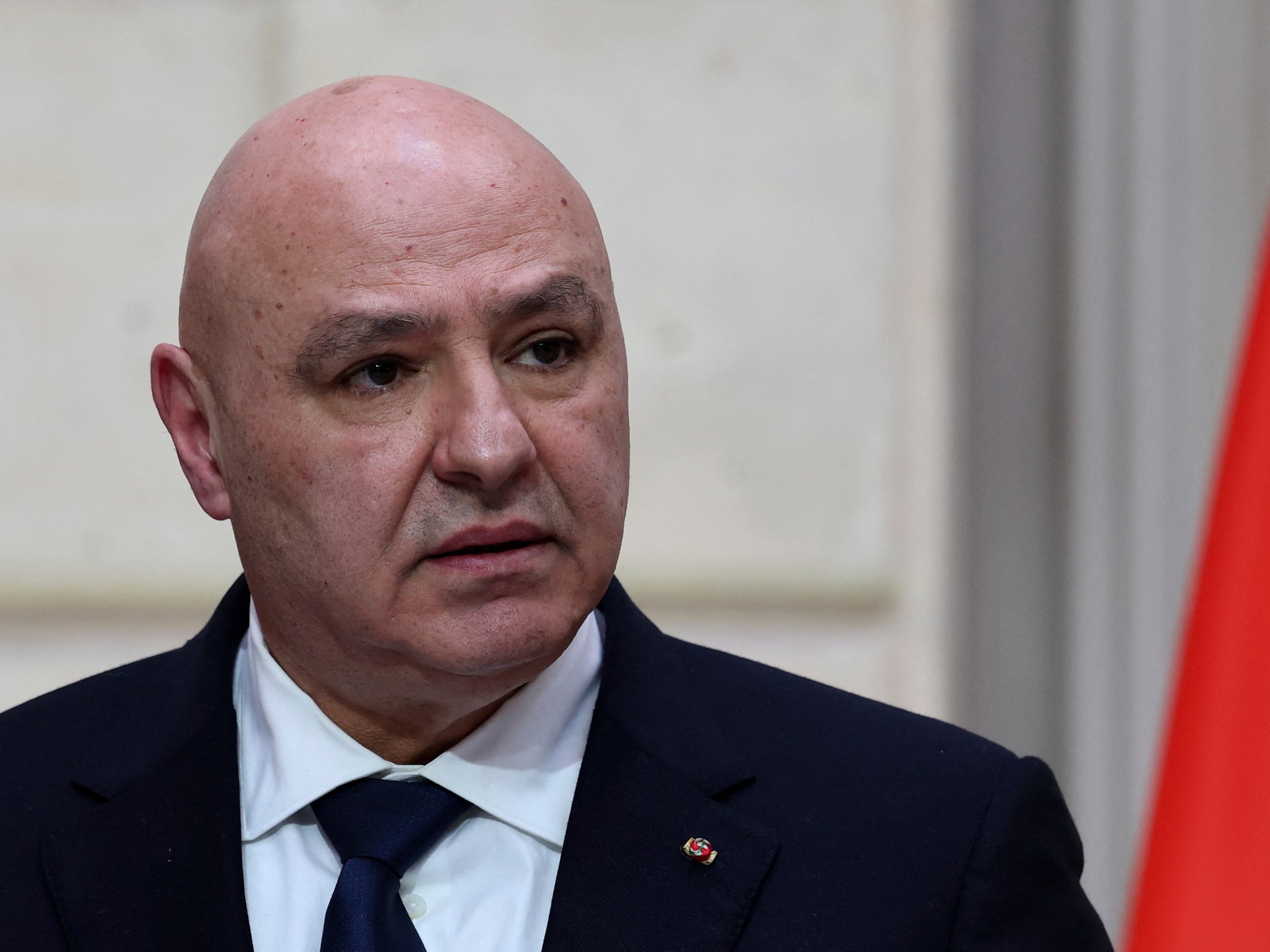
Joseph Aoun makes the comment as the Lebanese army says it foils a rocket attack on Israel.
Lebanese President Joseph Aoun says he will not be rushed to disarm Hezbollah under unfavourable circumstances as the Israeli military continues to launch deadly air strikes on the country in violation of a November ceasefire.
In comments to reporters after a meeting with a Maronite patriarch to mark Easter on Sunday, the former army chief said he considers disarming the Iran-aligned group a “sensitive, delicate issue” that must be handled with consideration to preserve national peace.
“Any controversial domestic issue in Lebanon can only be approached through conciliatory, nonconfrontational dialogue and communication. If not, we will lead Lebanon to ruin,” Aoun said.
The Trump administration has been applying sustained pressure on Beirut to push for the disarming of Hezbollah, leading to Aoun announcing last week that he hopes to complete the process by the end of 2025 – the first time a senior official has set any deadline.
Aoun’s comments on Sunday came shortly after the Lebanese government praised the army for foiling an imminent attack on Israel, a first since the November ceasefire with Hezbollah, which Israel has violated on numerous occasions.
The Lebanese army released images of confiscated rockets and launch pads and said it arrested multiple individuals previously involved in rocket attacks on Israel as well.
The raid that led to the confiscated munitions was reported to have taken place in the Sidon area of southern Lebanon.
The office of Prime Minister Nawaf Sharif urged security forces to “thwart suspicious plots that seek to embroil Lebanon in further wars” and said this work proves that the Lebanese state is moving towards full sovereignty over its territory with its own forces.
“The Lebanese state alone is the authority that makes decisions regarding war and peace and is the body authorised to possess weapons,” he said.
Hezbollah has not immediately reacted to Sunday’s statements, but its leader Naim Qassem said on Friday that the group “will not let anyone disarm” it, especially as the Israeli military continues to occupy parts of southern Lebanon.
Hezbollah was formed in the aftermath of the Israeli invasion of Lebanon in 1982 and grew over the decades to possess substantial political and military power. This included forcing Israel out from its occupation of southern Lebanon in 2000 and fighting Israel to a stalemate in a 2006 war.
But the organisation has lost many leaders in Israeli assassinations as well as much military equipment since the start of Israel’s war on Gaza in October 2023 and must withdraw its military forces from southern Lebanon as part of the ceasefire.
Israeli air strikes kill two
Lebanon’s Ministry of Public Health said on Sunday that two people were killed in two Israeli air raids in southern Lebanon.
Israeli warplanes fired at least two missiles at a house in Hula, a village in Nabatieh governorate, killing one person, the ministry said.
An Israeli drone attack also targeted a vehicle in Kaoutariyet as-Siyad, killing another person, it said.
The footage below, which has been verified by Al Jazeera’s Sanad fact-checking agency, shows plumes of smoke rising after Israeli air strikes targeted the heights of the Iqlim al-Tuffah region of southern Lebanon.
مراسل الجديد: سلسلة غارات عنيفة من الطيران الحربي إستهدفت أطراف مليتا ومرتفعات إقليم التفاح@farhat_muhamad1 pic.twitter.com/8TMHLdc06q
— Al Jadeed News (@ALJADEEDNEWS) April 20, 2025
The Israeli military said one of its strikes on southern Lebanon killed a deputy head of a Hezbollah unit responsible for smuggling weapons and funds to the group, including across the country’s border with Syria.
The army added that the targeted man was “extensively involved” in Hezbollah efforts to revitalise after the group took heavy blows during the war.
After killing two other people on Saturday, the Israeli army also claimed they were Hezbollah members.
Middle East
Israeli army only finds ‘professional failures’ in Gaza aid worker killings | Israel-Palestine conflict News
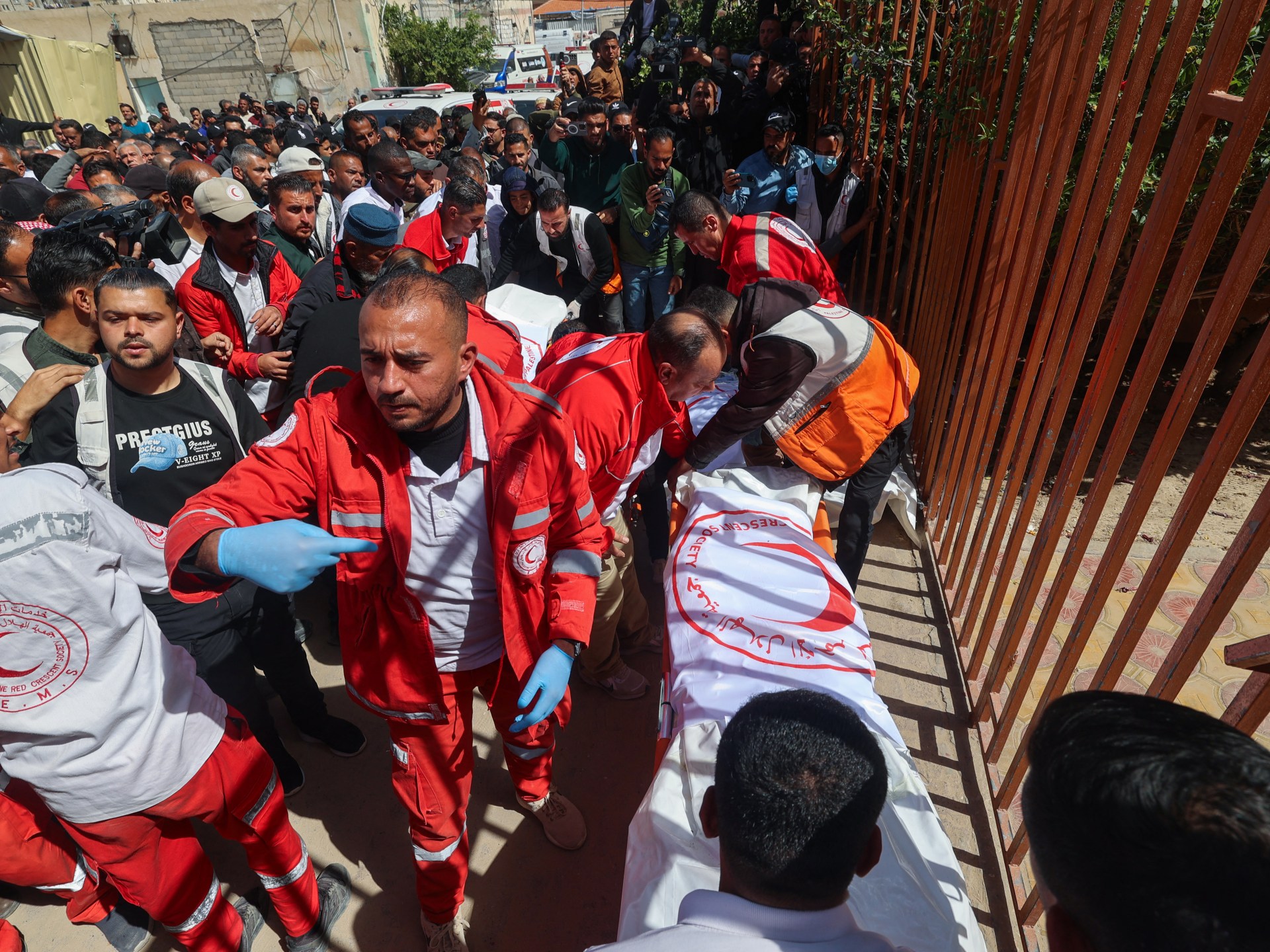
The Israeli military has released details of an investigation into its own killing of 15 Palestinian paramedics and aid workers in Gaza last month, saying its code of ethics was not violated and only one soldier is dismissed, in an attack that sparked outrage in the international community.
The Palestine Red Crescent Society (PRCS) and the Israeli rights organisation Breaking the Silence rejected the findings of the Israeli probe on Sunday.
PRCS’s president told Al-Araby TV that the Israeli narrative on the killings in Rafah was “contradictory”.
“It is incomprehensible why the occupation soldiers buried the bodies of the paramedics in a criminal manner,” Younis al-Khatib said.
Al-Khatib added that the Israeli army communicated with the paramedics before killing them and that the evidence – including a video showing their ambulances flashing emergency lights – proved “the falsity of the occupation’s narrative regarding the limited visibility at the site”.
“An independent and impartial investigation must be conducted by a UN body,” he said.
PRCS, which had medics killed by Israel in the incident, also denounced the Israeli report as “full of lies” on Sunday. “It is invalid and unacceptable, as it justifies the killing and shifts responsibility to a personal error in the field command when the truth is quite different,” Nebal Farsakh, spokesperson for the organisation, told the AFP news agency.
The PRCS said last week that it received confirmation from the International Committee of the Red Cross (ICRC) that one of its medics who was missing is being held by Israel.
🚨Urgent: We have been informed by the International Committee of the Red Cross that PRCS medic Assad Al-Nsasrah is being held by the Israeli occupation authorities. His fate had remained unknown since he was targeted along with other PRCS medics in #Rafah.
📢We call on the… pic.twitter.com/l0oOxujS8G— PRCS (@PalestineRCS) April 13, 2025
The Israeli army on Sunday claimed that six of the aid workers who were killed and buried in a shallow mass grave along with their ambulances were Hamas “terrorists”, without providing any evidence.
It admitted its probe detected a series of “professional failures”, including partial and inaccurate reporting by the commanding officers in the field invading southern Gaza’s Rafah.
The deputy commander of the Golani Reconnaissance Battalion will be dismissed, while the commanding officer of the 14th Brigade is to receive a reprimand.
The examination also found “no evidence to support claims of execution or that any of the deceased were bound before or after the shooting”, despite the testimonies and the evidence.
The Israeli military had initially claimed that the ambulances and aid workers were not clearly marked as first responders and approached its troops “suspiciously”.
A mobile phone video recorded by one of the killed aid workers that was obtained by the New York Times showed that the crew were clearly marked and visible to Israeli forces, and were killed by Israeli fire that lasted several minutes.
United Nations and Palestinian officials later found the mass grave and the bulldozed ambulances and bodies after Israeli authorities granted access to the area of the mostly destroyed city of Rafah bordering Egypt.
‘Another day, another cover-up’
The Israeli anti-occupation group Breaking the Silence said the military investigation is “riddled with contradictions, vague phrasing, and selective details”.
“Not every lie has a video to expose it, but this report doesn’t even attempt to engage with the truth,” the group said. “Another day, another cover-up. More innocent lives taken, with no accountability.”
But far-right voices in the government of Israeli Prime Minister Benjamin Netanyahu believe the army is going too far in punishing the soldiers.
Itamar Ben-Gvir, Israel’s ultranationalist national security minister, said the decision to dismiss the deputy commander was a “grave mistake” that must be reversed.
“Our combat soldiers, who are sacrificing their lives in Gaza, deserve our full support,” he said.

‘Report invites many questions’
Human rights lawyer Geoffrey Nice told Al Jazeera that the findings of the probe raise questions about the Israeli military’s conduct in Gaza and the thoroughness of the investigative process.
“It’s a pretty surprising document. It’s also a document that invites many questions that it will be difficult, I suspect, for the [Israeli military] to answer,” Nice said in a television interview.
“For example, [there is] the proposition that six of these people were Hamas, presumably members of Hamas on active [military] service, not people who might have been associated with Hamas in some way. No documentary evidence at all is identified [for that].”
Israel has a track record of denying accusations of wrongdoing and contradicting its own earlier statements.
Past investigations have exonerated the armed forces or placed the blame on a single individual without broader repercussions.
The UN accused the Israeli military of being responsible for the killing of the 15 aid workers, along with the killing of a Bulgarian UN staff member and wounding of six other foreign staff in Gaza’s Deir el-Balah last month.
The organisation has been forced to significantly cut its staff in Gaza as the war’s death toll continues to mount.
Middle East
‘Little guest’: How a rescued baby brought two Gaza families together | Israel-Palestine conflict
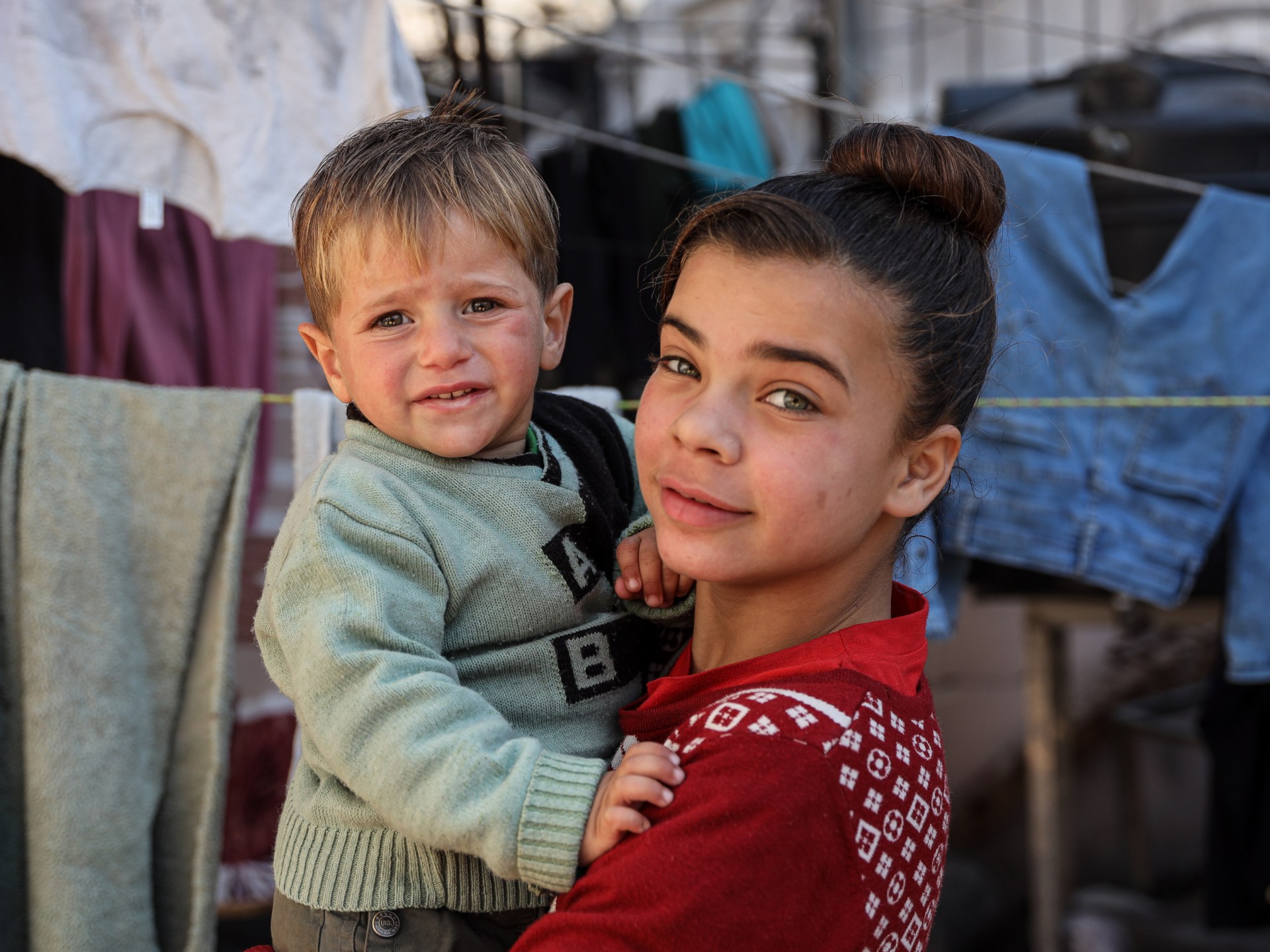
Jabalia, Gaza – Between the arms of his father and the family who cared for him during his disappearance, little Mohammed plays happily.
About 16 months ago, a 13-month-old Mohammed sat crying beside his mother’s lifeless body, surrounded by the dead and wounded, after an attack on the school the family was sheltering in.
That day, amid the chaos and fear as displaced families fled, he disappeared.
His father, Tareq Abu Jabal, spent more than a year looking for Mohammed while, unbeknownst to him, another man from the school was looking for Tareq.
‘A little guest’
Rasem Nabhan and his family were also displaced and sheltering in al-Rafei School in Jabalia in northern Gaza when two Israeli bombs hit it in late December 2023.
“We were terrified, the children were screaming,” the 41-year-old said. “Moments later, quadcopters appeared, broadcasting orders for everyone to evacuate immediately. There was gunfire everywhere.”
Rasem focused on getting his wife and seven children out of the school with the other women and children, then ran to help extinguish the flames still burning in the bombed classrooms. They needed to check if anyone was left alive.
![The story of the lost child in Gaza 2025 [Abdelhakim Abu Riash/Al Jazeera]](https://www.aljazeera.com/wp-content/uploads/2025/04/873A6295-copy-1744828206.jpg?w=770&resize=770%2C513)
“Blood covered the walls. … Body parts were scattered on the floor among the wounded and the dead. It was beyond words,” Rasem said.
Amid the carnage, he said, “I saw a baby crying and screaming. Next to him lay the body of a woman – her head and stomach torn apart, her body covered in blood. I think she was his mother.”
He picked up the child and ran, not thinking. “The baby’s face was red, and he could barely breathe, he was crying so hard.”
“I kept asking people around me: ‘Do you know this child? His mother was killed.’ But no one did,” he recounted. “It was impossible. … It felt like the Day of Judgement, everyone fleeing, clutching their children.”
Tanks had surrounded the school by then, he said, forcing everyone to walk south. Rasem walked with the baby in his arms until he reached his wife, who was waiting for him by the road with their children.
“I handed the child to my wife and told her I’d found him at the school with his dead mother,” he said.
Fawakeh Nabhan, Rasem’s 34-year-old wife, took the baby as her older daughters clamoured to be allowed to hold him.
“For a moment, the fear faded as we welcomed this little guest,” she said. “He had the most beautiful face, and I felt an instant connection.”
They nicknamed the baby Hamoud, the diminutive for Mohammed and Ahmed, two popular names, and took him along as they walked south towards Rashid Street, passing through the Israeli army’s Netzarim checkpoint.
They took turns carrying the baby – Rasem, Fawakeh and their two older daughters, 19-year-old Islam and 18-year-old Amina.
“He would fall asleep and wake up in our arms, like any other child, unaware of what was going on around him,” Fawakeh said.
Growing attached
The family didn’t know how old the baby was, but they guessed he was seven to nine months old, based on his size and weight.
“We’d never seen him at the school before and had no idea [about] his real age or when he was born,” Fawakeh added.
The family walked to central Gaza’s Deir el-Balah, resting there a while before continuing to Khan Younis in the south, where they had heard there were spots available at another school-turned-shelter.
“Despite the risks, I felt a school was better than living in a tent. At least we would have a concrete roof over our heads,” Fawakeh said.

The story of their displacements is long and complex because they moved from school to displacement camp to sleeping rough back to a tent for months.
Through it all, Rasem and Fawakeh saw the baby as a source of warmth and joy.
“At first, he was withdrawn and silent, never laughing, no matter how much we tried. For nearly 50 days, he was like that – as if he were searching for his mother and wondering who we were,” Rasem recalled. “But over time, he started to open up. He grew attached to us, and we to him.”
Throughout their displacement, Fawakeh, with Islam and Amina, cared for the baby. But when it came to feeding him, Fawakeh insisted on doing it herself.
But caring for a baby as Israel wages its genocidal war on Gaza is a huge financial strain because formula, diapers and nutritious food are either not available or are exorbitantly priced.
“When we arrived in the south, we bought formula and a pacifier, but he refused. I think he was breastfed by his mother,” Fawakeh said. “In a way, that was a relief because formula was expensive. Instead, I fed him lentils, beans, rice. He ate whatever we ate.”
“He loved bananas so much. We could only afford two – one for him and one for my four-year-old son, Abdullah.”
Diapers had to be rationed as their price skyrocketed, reaching 10 shekels a diaper (about $2.70).
“I would put one diaper on him at night, and during the day, I used cotton cloths that I changed frequently,” Fawakeh explained.
Blessings
As the family moved around, the baby became well known and adored, bringing blessings to the family, Rasem said.
Hamoud did not look like the Nabhans, and people would ask Rasem and Fawakeh about him. When they heard his story, their hearts would melt, and they would shower the little boy with whatever small gifts they could find.
“Our neighbours in the camp would send us plates of food just for him,” Fawakeh said with a laugh. “They would say, ‘Make sure he eats this.’”
![The story of the lost child in Gaza 2025 [Abdelhakim Abu Riash/Al Jazeera]](https://www.aljazeera.com/wp-content/uploads/2025/04/873A6285-copy-1744828233.jpg?w=770&resize=770%2C513)
“He calls my husband Baba and me Mama. He sleeps in my lap, runs straight to me when he needs comfort,” Fawakeh said, lowering her voice as she glanced at her youngest son.
“Abdullah, my four-year-old, would get so jealous and cry whenever I gave the baby too much attention.”
Overall, the couple’s children – Mohammed, 20; Islam, 19; Amina, 18; Maryam, 12; Nour el-Huda, 10; Mustafa, nine; and Abdallah, four – embraced the baby as one of their own.
Despite numerous offers from organisations, orphan sponsorship programmes and even other families willing to adopt the baby, Rasem refused.
“He is my eighth child. I love him deeply, and I refused the idea of someone taking him from me,” Rasem said.
“My answer was always firm: The only way I would ever let him go is if I found his real family.”
Then, in a hushed voice, he confessed: “But in my heart, I prayed I wouldn’t find them. I stopped searching. We had become too attached.”
A father’s search
As Rasem spoke, Mohammed’s father Tareq, 35, sat nearby listening, smiling at his youngest son.
The father of three – Omar, 14; Tolay, nine; and Mohammed, now 26 months – had never stopped looking for his missing child.
“On the day al-Rafei School was bombed, my wife and three children were inside our classroom,” Tareq recalled. “I was in the schoolyard when the air strike hit. I ran, screaming, towards them.”
The Israeli army had shelled both al-Rafei and the school next door. “In that strike, my wife, my nephew and six others were killed – eight lives lost in an instant,” he said.
“When I reached our classroom, I saw Omar and Tolay, both injured. Omar had shrapnel in his back, and my daughter had been struck in the stomach. Then I saw my wife. … Her body was torn apart.”
His voice faltered. “I collapsed. But somehow, I forced myself to help evacuate her body with the others.”
His wife, Iman Abu Jabal, was 33. Tolay carried shrapnel in her stomach for three months.
“Grief, fear for my wounded children, the screams, the rush to evacuate, the army’s drones circling overhead,” Tareq recounted. “In the panic, I didn’t take Mohammed with me when I carried his siblings out.”
When he went back for Mohammed, he couldn’t find him. The baby was gone.
“I started asking everyone,” he said. “Some told me he had been killed. Others said someone took him. The stories kept changing.”
![The story of the lost child in Gaza 2025 [Abdelhakim Abu Riash/Al Jazeera]](https://www.aljazeera.com/wp-content/uploads/2025/04/873A5680-copy-1744828194.jpg?w=770&resize=770%2C513)
“I was devastated. I searched through the crowds, but everyone was running, screaming, grabbing their children and fleeing,” he added.
He was not able to find his baby.
He went back into the school with a few others to bury the victims of the bombing.
“We wrapped my wife’s body in a sheet and waited for three hours in a classroom, unable to go outside to the yard to bury her,” Tareq recalled.
“The shelling and gunfire were relentless, but I wanted to bury my wife, no matter what.”
Among those who remained at the school was a surgeon who treated the wounded, including Tareq’s children, as best he could.
“My nephew was bleeding heavily. A young man helped him leave the school and walk to al-Awda Hospital in Jabalia, but he arrived in critical condition and passed away there.”
Tareq and the children spent the night in the school with the others who had stayed to bury their loved ones. In the morning, they snuck out through a gap in the school’s walls, taking detours to reach his brother’s house in western Jabalia.
After dropping the older kids off, Tareq spent the rest of the day searching the hospitals in Jabalia for Mohammed, then at the various spots where displaced people had gathered.
“I was told a family had taken him to the south while others hadn’t seen or heard anything about him.”
But Tareq also had to focus on his other children, traumatised by seeing their mother die and in need of food, medicine and care.
By the end of February 2024, northern Gaza was in the grips of famine, so Tareq decided to move south to save the children from the severe hunger sweeping the region.
As soon as he arrived in Rafah, Tareq resumed his search for Mohammed.
“I started asking relatives, acquaintances and neighbours who were with us in the school we had fled from, but I found no trace of him,” he continued. “I spent days like this until I lost all hope and turned to God.”
“I was seeing people fleeing, leaving their children behind in the bombings and evacuations. I saw children lost and crying. … It made me think about my child.”
![The story of the lost child in Gaza 2025 [Abdelhakim Abu Riash/Al Jazeera]](https://www.aljazeera.com/wp-content/uploads/2025/04/873A5779-copy-1744829776.jpg?w=770&resize=770%2C513)
Reuniting
On January 27, when displaced families were allowed to return to northern Gaza, the Abu Jabals and the Nabhans walked back to Jabalia.
“By 8am, my children and I were standing on the rubble of our home in Jabalia,” Tareq told Al Jazeera. “We had set out at 4am – we couldn’t wait any longer.”
Rasem and Fawakeh’s family headed out a bit later, and along the way, they were stopped for an interview.
“I talked about my joy to be going back. Then the journalist asked me about the baby, thinking he was my son and how he had grown up in the south,” Rasem recalled.
“I told her he wasn’t my son and explained his story. She was so moved, she made a plea on air for anyone to identify the child’s family,” Rasem added.
The family eventually got to Rasem’s parents’ home in Jabalia, not too far, as they would find out later, from Hamoud’s “real” family.
The next morning, Tareq came across the video from the TV interview.
“His features hadn’t changed although he had grown a little. I started shouting out across the rubble: ‘My son’s alive! My son Mohammed is alive!’
“My brother, his wife, the family and neighbours rushed over, asking what was wrong.
“We all watched the video together. Rasem’s face was familiar because we’d been sheltering at the same school.”
Asking around, Tareq figured out where Rasem’s family was staying and rushed over.
“Me, my children and brother went over, and I introduced myself to Rasem, who recognised me right away.
“Mohammed didn’t recognise me and cried,” he said, smiling in gratitude anyway.
The Nabhans were conflicted, happy that Hamoud, who they now knew was named Mohammed, had found his family but sad that he was leaving.
“It felt like I was giving away a piece of my soul,” Rasem said. “The hardest moment was when they left, and Hamoud was calling me, crying, ‘Baba, Baba!’”

“I spent the night crying from the sadness over Hamoud’s departure,” Fawakeh said, her eyes brimming with tears.
“My daughters cried for an entire week. The house felt like a wake. Hamoud had become a part of us,” Fawakeh added as she held the visiting Mohammed, who still calls her Mama, close.
“I told my husband and Tareq that Hamoud should come see us often. He’s like our son, and he’s very attached to me.
“Luckily, they live nearby, and my children always go to bring him over, so he can spend time with us. He brings us such joy,” she beamed.
Watching the Nabhans playing with his son, Tareq smiled. “I’m so grateful to them, from the bottom of my heart. They raised him as if he were their own. … He was with a family who showed him the love and care of the mother he lost.
“But as you can see, when Mohammed sees Rasem, his wife and their family, he completely forgets about me,” Tareq said.
“He loves them so much.”
Middle East
The Hawaii of Israel: How Trump legitimised a longstanding Israeli vision | Israel-Palestine conflict
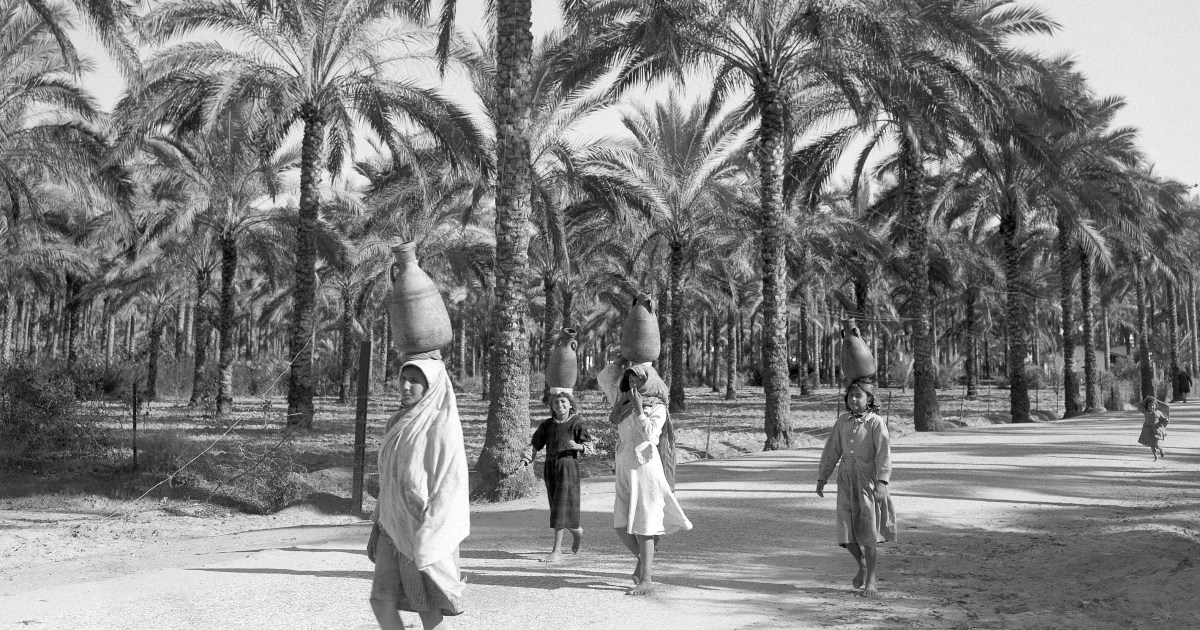
On April 7, United States President Donald Trump met Israeli Prime Minister Benjamin Netanyahu for a second time since his inauguration. Speaking to the media, Trump doubled down on his earlier comments about the Gaza Strip, describing it as an “incredible piece of important real estate”.
Trump also repeated his suggestion that the Palestinians should leave the Strip “to different countries” and claimed that people “really do love that vision. … A lot of people like my concept.”
Days later, about 70 percent of Gaza had been turned into a “no-go zone” for Palestinians. Confirming that Israel is working “in accordance with the US president’s vision, which we seek to realise”, Israeli Defence Minister Israel Katz declared Israel’s intention to “seize” more territory, adding that “wilful passage” will be given to Palestinians who want to leave.
It is by now clear that Trump’s statements on Gaza have had the effect of legitimising a longstanding Israeli vision of ethnic cleansing of the Strip. What the US president calls “my concept” is in fact not his at all.
Over decades of Israeli occupation and colonisation of the Gaza Strip, there have been multiple plans to empty out or disperse the Palestinian population in a bid to secure full control over this part of Palestine. The power of colonial practices has also been tested. For example, to draw Israeli settlers and thereby help transform Gaza’s demographics, the Strip was at one point even promoted as the “Hawaii of Israel”.
Left out of Israeli war aims in the 1948 Arab-Israeli War, the Gaza Strip emerged out of the 1949 Armistice Agreements under Egyptian military rule. Constituting only a small part of what until then had been the Gaza District of Palestine, the Gaza Strip was home to two groups of Palestinians: the local population and refugees – people who had been forced off their land as Israel expanded its territorial reach during the war.
As the guns fell silent, the Gaza Strip became known in Israeli policy circles as the “job unfinished” – a slice of land next to the Egyptian border that Israel’s leaders would like to control, preferably without its Palestinian population.
Israel’s first attempt to take Gaza by force occurred in 1956. But under pressure from US President Dwight Eisenhower, Israeli Prime Minister David Ben-Gurion had no choice but to withdraw and put an end to the Israeli occupation. The botched attempt taught Israel an important lesson: To redraw the map of the Middle East and to make its territorial expansionist agenda a success, Israel needed American support and approval.
The 1967 Arab-Israeli War was far more successful in this regard. Through conquest and occupation, the Gaza Strip was brought under direct Israeli rule. This opened the door to revitalise “transfer” – the forced displacement and ethnic cleansing of Palestinians. Seen as both necessary and permissible or, in Ben-Gurion’s words, “an important humane and Zionist idea”, transfer was recognised as an effective tool to advance Zionist colonisation of Palestine.
In the following years, as noted by Palestinian historian Nur Masalha, transfer acquired different labels. These included “population exchange”, “Arab return to Arabia”, “voluntary emigration” and “rehabilitation” with different Israeli governments taking different approaches.
One approach was Defence Minister Moshe Dayan’s “open bridges”, which allowed Palestinians in Gaza to leave for other countries in search of work. Another was to open offices in Gaza’s refugee camps to organise and pay for travel and passports for Palestinians willing to “voluntarily migrate”, which in effect turned the Israeli Ministry of Foreign Affairs into a “global travel agency”. Regardless of the approach, Israel’s policy objective remained the same: to create a drive in Palestinians to leave the Strip.
“I want them all to go, even if they go to the moon,” Israeli Prime Minister Levi Eshkol said. Expressing Israeli frustration, Eshkol articulated the feeling of being stuck with what was considered the problem of Gaza. After all, only the Palestinian population there – and the sizeable refugee population in particular – stood in the way of full Israeli annexation.
In response to Israel’s Gaza “dilemma”, its politicians also looked for more comprehensive solutions. This led to an almost continuous flow of plans for the “rehabilitation” of Palestinians outside the Strip. Starting immediately after the 1967 war, a variety of potential destinations came up. These included the West Bank, the Sinai Peninsula, Iraq, or even as far afield as Canada and Australia.
Despite Israeli efforts and elaboration of plans – and much to the disappointment of Israel’s decision-makers – the initiatives came to naught as the number of Palestinians leaving the Strip remained limited. And given other considerations, including moral, legal and diplomatic ones, the plans to displace a large number of Palestinians from Gaza were left in the drawer.
But as Israeli politicians turned to examine their menu of choices in the post-October 7, 2023, era, “voluntary emigration”, or forced displacement, re-emerged. Gone was any sensitivity to international opinion and potential reactions. Instead, Trump has led the way, making statements on Gaza that in effect turn decades of Zionist ideology and practice into official American policy.
By means of his policy stance, the US president has legitimised a longstanding Israeli vision of ethnic cleansing in the Strip. In the process, his articulation of policy has moved ever closer to the strand of Revisionist Zionism that viewed Palestinians as aliens in their own land and, therefore, “transferable”.
In arguing that Palestinians need to go to make Israel and the region safe, Trump has departed from the internationally shared principle that Palestinians in the Gaza Strip – as elsewhere in the occupied Palestinian territory – have legitimate rights to self-determination in their land. As such, Trump brings to mind Revisionist Zionist ideologue Ze’ev Jabotinsky, who argued that “when the Arab claim is confronted with our Jewish demand to be saved, it is like the claims of appetite vs the claims of starvation” with “transfer” inextricably linked to Jewish rights to the land.
The cynical promises of a better future for people who are left with nothing but their land after a brutal war of erasure and plausible genocide must be taken seriously. The legitimacy Trump has given to Israeli plans poses a threat in the here and now, but it could also outlast his presidency.
That is because he has offered US presidential sanction of ethnic cleansing as an acceptable tool. This leaves the door open for Israel – in the near or distant future – to pursue “transfer”, “rehabilitation” and “voluntary emigration” of Palestinians, whether in Gaza or the West Bank.
Furthermore, the American president has repeatedly communicated US support for illegal land seizures and colonisation. Suggesting Gaza (and Greenland) could become “US territory”, he has reintroduced and validated ideas that most leaders of the world had put on the scrap heap of history.
Finally, Trump has shifted the US position away from the premise of working towards a two-state solution. In fact, considering his statements, there appears to be a fundamental disregard for Palestinians in Gaza and their collective right to self-determination.
Looking at current US policy against historical record, Trump’s “Riviera of the Middle East” seems a curious combination of Zionist ethnic cleansing under the “transfer” model and the colonial ideal of the “Hawaii of Israel”.
It is no wonder Trump has been cheered on by Israeli leaders as he calls for the forced depopulation of the Gaza Strip and its transformation into fully fledged colonial territory – annexed or otherwise. After all, Trump’s ideas follow in the footsteps of Zionist leaders from Ben-Gurion to Netanyahu, under whom transfer has been the preferred but diplomatically and legally challenging option all along.
With Trump going out in front, such challenges could turn into tomorrow’s opportunities. It remains the task of other states to stand up against Israeli-American normalisation of continued ethnic cleansing and colonial land grabs in Palestine.
The views expressed in this article are the author’s own and do not necessarily reflect Al Jazeera’s editorial stance.
-
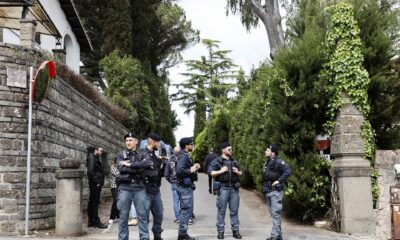
 Middle East1 day ago
Middle East1 day agoIran says progress in nuclear talks with US, confirms third round next week | News
-

 Middle East2 days ago
Middle East2 days agoTunisian court hands opposition figures lengthy jail terms | Human Rights News
-
Lifestyle2 days ago
The 250th anniversary of the Battles of Lexington and Concord opens debate over US independence
-
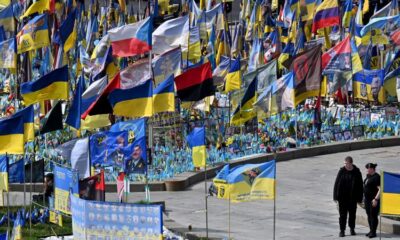
 Europe1 day ago
Europe1 day agoRussia Ukraine truce: The real strategy behind Russia’s sudden truce announcement
-
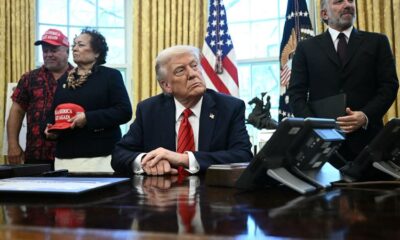
 Europe1 day ago
Europe1 day agoLive updates: Trump news on Iran and Ukraine talks, immigration crackdown, tariffs
-
Asia1 day ago
Hong Kong’s oldest Democratic Party is shutting down as Beijing leaves no room for dissent
-
Middle East1 day ago
Israeli bombardment of Gaza kills 92 in two days: Health Ministry | Israel-Palestine conflict News
-

 Europe1 day ago
Europe1 day agoRussia sentences 19-year-old woman to nearly three years in a penal colony after poetic anti-war protest




